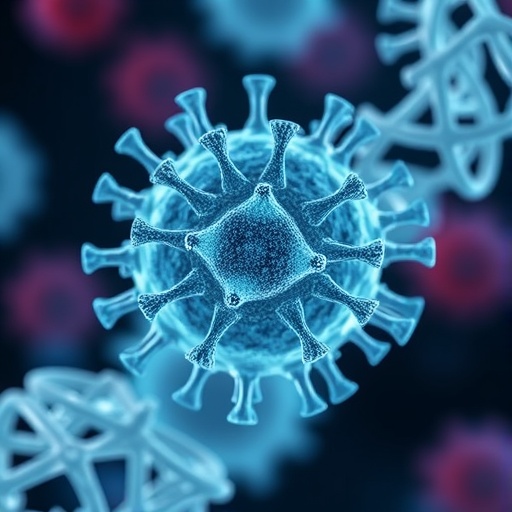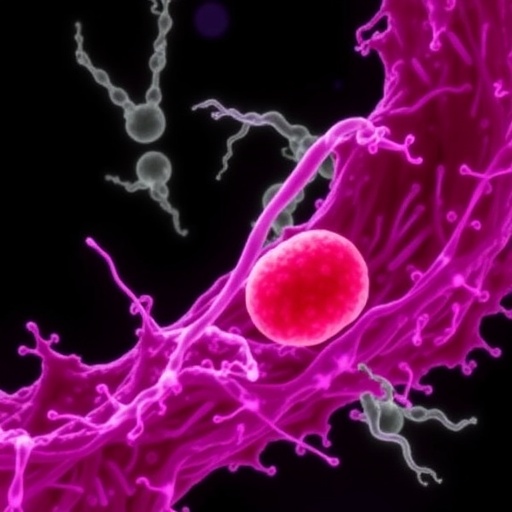
A groundbreaking discovery by scientists from La Trobe University in Australia and Kumamoto University in Japan has unveiled a promising pathway toward the development of COVID-19 vaccines that could offer longer-lasting immunity and broader protection against evolving variants of the virus. Contrary to current vaccines that predominantly target the mutable spike protein decorating the virus’s exterior, this new research identifies a more stable internal viral protein that could serve as a superior immune target. This shift in focus opens an important new chapter in the fight against SARS-CoV-2, promising vaccines that maintain efficacy as the virus continues to mutate worldwide.
Central to this research is an internal protein of SARS-CoV-2, commonly referred to as the nucleocapsid protein, which encapsulates the virus’s genetic material. Unlike the spike protein that frequently mutates under selective pressure from neutralizing antibodies, the nucleocapsid protein remains relatively conserved because of its critical role in viral structure and replication. This intrinsic stability makes it a compelling candidate for vaccine design. The research team found that peptides derived from this protein are presented on the surface of infected human cells by an immune presentation molecule known as HLA-C.
HLA-C is a variant of the major histocompatibility complex (MHC) class I molecules, which are integral to the immune system’s ability to detect viral infections. These molecules display intracellular peptides on the cell surface, essentially signaling the presence of infection to cytotoxic CD8+ T cells, or killer T cells. Upon recognition of viral peptides bound to HLA-C, these T cells initiate an immune response to destroy the infected cells, thereby curbing viral propagation. The discovery highlights that killer T cells recognize the nucleocapsid peptide in conjunction with HLA-C, mounting a potent antiviral response.
Professor Stephanie Gras, who leads the La Trobe research team, emphasizes that this mode of immune recognition could overcome a significant limitation of current vaccine strategies. Vaccines targeting the spike protein are highly effective initially, yet their protection wanes as new variants emerge carrying spike mutations that allow immune escape. By contrast, an immunity elicited against the conserved internal nucleocapsid peptide could maintain protection across multiple SARS-CoV-2 variants, including those yet to evolve, providing a crucial advantage in pandemic control.
The molecular basis of this T cell response was elucidated through sophisticated experimental methods, involving structural biology and immunological assays. The team employed high-resolution techniques to analyze how the nucleocapsid-derived peptide binds within the groove of HLA-C molecules and how this complex is recognized by CD8+ T cell receptors. This deep mechanistic insight provides a blueprint for the rational design of vaccines that harness HLA-C-restricted T cell immunity, potentially enabling the induction of robust cellular immunity alongside existing antibody responses.
Further implications of this research lie in the prospect of reducing the frequency of booster vaccinations needed to sustain immunity. Current vaccines require repeated booster doses to combat waning antibody levels and emerging variants, a strategy that is challenging logistically and may face public acceptance hurdles. Vaccines that stimulate killer T cells targeting stable viral epitopes could confer durable immunity, lowering the need for frequent boosters and enhancing long-term population-level protection against COVID-19.
Another critical benefit of targeting the nucleocapsid protein could be its impact on Long COVID, a debilitating post-viral syndrome affecting approximately 10% of the infected population. Persistent viral reservoirs and immune dysregulation are hypothesized contributors to Long COVID, and enhancing T cell-mediated clearance of infected cells might mitigate these complications. Professor Gras notes that preventing repeated infections and promoting efficient viral clearance could reduce the incidence and severity of Long COVID, underscoring the societal importance of improved vaccine designs.
The collaborative nature of this research is noteworthy, involving advanced data collection from the Australian Synchrotron and interdisciplinary expertise from immunology, structural biology, and virology. The integration of these disciplines allowed the team to comprehensively characterize the immune response and to validate the potential of nucleocapsid peptides as critical immune targets. This synergy exemplifies how cutting-edge infrastructure and international cooperation can accelerate vital scientific breakthroughs.
Funding for this landmark study was provided by major Australian health bodies, including the National Health and Medical Research Council (NHMRC) and the Medical Research Future Fund (MRFF). The support underscores the importance placed on innovative COVID-19 research in protecting global health and guiding public health policy. The financial backing has also enabled the team to expand their scope toward investigating other post-viral syndromes related to SARS-CoV-2 infection.
Professor Gras is poised to lead a new research center at La Trobe University dedicated to unraveling the causes and mechanisms behind Long COVID and other severe post-viral conditions, including Myalgic Encephalomyelitis/Chronic Fatigue Syndrome (ME/CFS) and Multiple Sclerosis (MS). The Post-Acute Viral Infection diseases Group (PAVING) Centre of Research Excellence will leverage an initial $3 million funding investment to advance understanding and develop targeted therapies for these complex diseases that significantly impair quality of life.
This pioneering identification of a potent antiviral T cell response guided by HLA-C presents a dynamic framework for next-generation vaccine development not only for COVID-19 but potentially other viral infections where internal protein epitopes remain more conserved than surface antigens. The strategic redirection toward conserved internal viral targets represents an evolutionary leap in vaccine science, offering hope for lasting protection against rapidly mutating pathogens. With ongoing studies and clinical validations, this research may pave the way for safer, more effective vaccines that keep pace with viral evolution.
As the global community continues to grapple with the challenges posed by SARS-CoV-2 and its variants, this transformative research offers a beacon of hope, grounding future vaccine strategies in the immune system’s capacity to recognize immutable viral elements. This approach, blending cellular immunology with precise molecular insights, could redefine how humanity prepares for and ultimately controls viral pandemics in the decades to come.
Subject of Research: Cells
Article Title: Molecular basis of potent antiviral HLA-C-restricted CD8+ T cell response to an immunodominant SARS-CoV-2 nucleocapsid epitope
News Publication Date: 28-Aug-2025
Web References: DOI: 10.1038/s41467-025-63288-3
References: Research published in Nature Communications
Keywords: COVID 19, Vaccination, Coronavirus
Tags: broader protection against COVID-19COVID-19 vaccine developmentHLA-C immune presentationimmune response to COVID-19 variantsKumamoto University scientific collaborationLa Trobe University COVID researchlong-lasting immunity against COVID-19new pathways in immunologyprotein-targeted vaccine strategiesSARS-CoV-2 nucleocapsid proteinstable internal viral proteinsvaccine efficacy against evolving viruses




